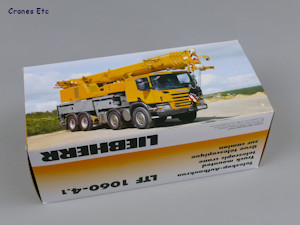 | | The box. | 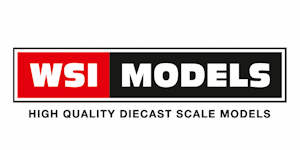 | 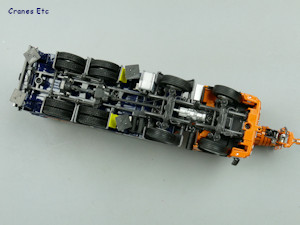 | | Detailed MAN chassis. | 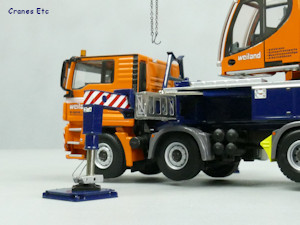 | | Outrigger beam has a storage box. | 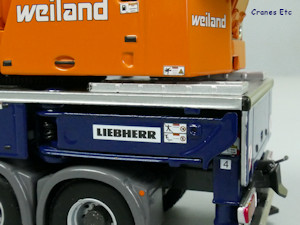 | | Paint highlighting and tiny graphics. | 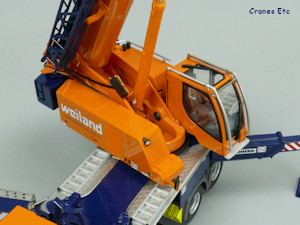 | | Hydraulic hoses in the body. | 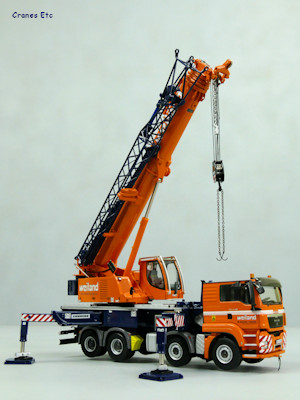 | | Set up and ready. | 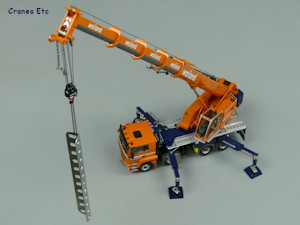 | | Lifting a column. | 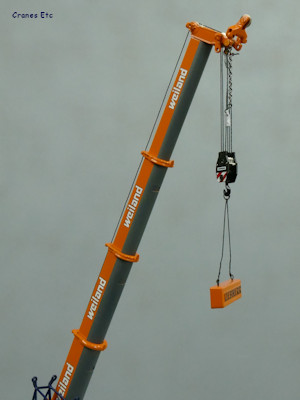 | | Graphics on the boom sections. |
|  Comment on this model. Comment on this model.
The Liebherr LTF 1060-4.1 is a 60 tonne crane and in this version is mounted on a four axle MAN carrier. It can lift to a height of 56m with the folding jib attached.
This version of the model is in the colours of the German crane hire company Weiland.
The model was previously reviewed in Liebherr, Sarens, HKV, Trost and McNallys colours with different truck bodies.
Packaging
The model comes in a standard Liebherr branded box.
There were no defects or missing parts on the review model.
There is no information about the real machine included, and no instructions for the model. There are a number of parts supplied in the box and most of these are obvious to fit, but an instruction sheet would be helpful.
Detail
The MAN truck chassis is very good. The transmission is fully modelled as is the suspension. The wheels have very detailed hubs and authentic treaded tyres with a different pattern front and rear.
The cab is finely detailed with high quality graphics, and there is a realistic number plate. There is a loop provided at the front to attach the hook during transport.
The outriggers are to a high standard. They have detailed metal beams and realistic pistons, and storage baskets are fitted to the front outrigger beams. The graphics applied include tiny warning notices and another excellent detail is the hydraulic hosing at the beam ends. A set of plastic spreader plates is also included.
The carrier deck is covered in diamond plating with various ladders cast into the deck. At the rear the towing hitch includes a tiny winding handle. The lights have plastic lenses.
The crane cab has metal grab rails on the outside, and windscreen wipers, but these seem a little fat for the scale. Inside the detailing is very good with a computer console and controls, and Liebherr printed on the seat back.
High detail continues on the crane body with hydraulic lines, beacon lights and excellent graphics, some of them tiny. The counterweight is made up of three parts.
The five stage telescopic boom is metal and is very realistic as it is not made out of diecast material but is most likely aluminium, and this allows the walls to be extremely thin resulting in very accurate profiles. As a result the innermost boom section looks correct rather than being unrealistically slim. The inner boom sections have Weiland graphics.
The double folding extension jib is metal, and it has a pop out guide pulley. There is no pulley at the end of the lattice boom section so it cannot be rigged without the solid section folded out. It can be connected to the main boom by pins and an offset angle can be set using a hydraulic cylinder.
The pulleys in the fly jib and the boom are metal and a nicely detailed three sheave hook block is provided. A Weiland-coloured Liebherr-branded ingot provides weight to suspend from the hook.
A safety cut-out chain hangs from the boom top and it and the hoist rope connector are pinned so they can be transferred to the extension boom.
Features
The steering of the front two axles are linked but with only a limited amount of movement possible.
The truck cab tilts to give access to the engine block, and it can be posed tilted.
The crane cab tilts to enable the operator to work more comfortably when lifting at height, and the access platform at the base of the cab slides out and retracts.
The outrigger beams fold out and extend, and the pads can be lowered and will support the crane. However care is required when retracting the pistons because if they are wound too far the screw pops the cap off the top of the outrigger beam and this small part is easily lost.
At the rear the counterweight is detachable and can be either stowed on the carrier deck or attached to the crane.
Rotation of the crane was a little stiff on the review model.
The hoist is operated by a supplied key, although for smoothest running it is best to run the hook on two falls of rope.
The boom sections lock into place when extended. The boom cylinder was stiff and jerky but would easily hold a pose. A pin is provided to insert through a hole in the cylinder jacket to maintain the maximum boom angle if required.
The extension jib pins to the side of the boom so it stays on when the boom is raised. The angle of the extension boom is controlled by a stiff cylinder rather than a latch. The model really needs a smaller hook to go with the extension jib as the three pulley hook block looks a little big.
Quality
This is a very high detail, high quality model with relatively little plastic.
The Weiland livery and applied graphics are very realistic.
Price
The model is fair value for a desirable limited edition.
Overall
Many versions have been made of this model and this is another attractive looking one. This model was first introduced in 2010 and not all aspects of the functionality are as good as they could be, but it remains a very good model.
Footnotes
The model first appeared in Krosche colours with the Liebherr liveried version on a Scania chassis available from November 2010. Many other liveries on different truck chassis have also been produced.
|
| |
| 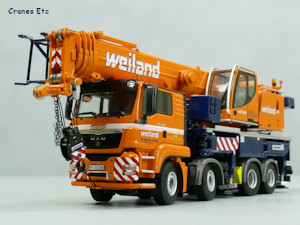 | | Nice colour scheme. | 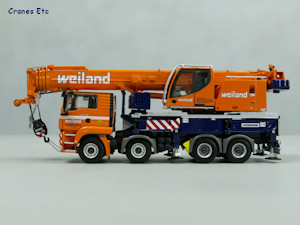 | | Profile view. | 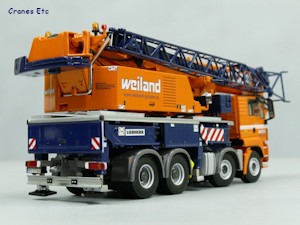 | | Outriggers are retracted to the maximum but sit low. | 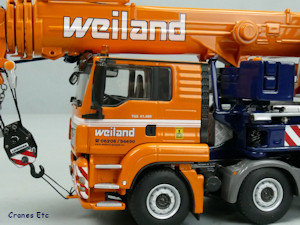 | | Detailed graphics. | 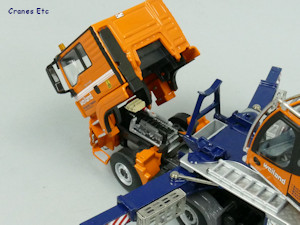 | | Detailed engine. | 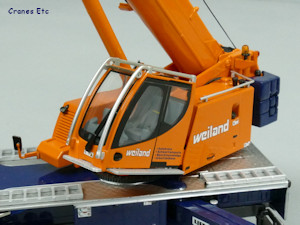 | | Tilting cab with Liebherr on the seat back. | 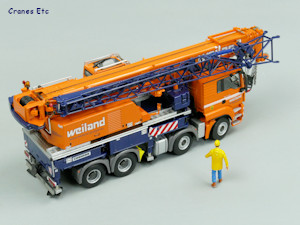 | | Counterweight in the transport position. | |
| 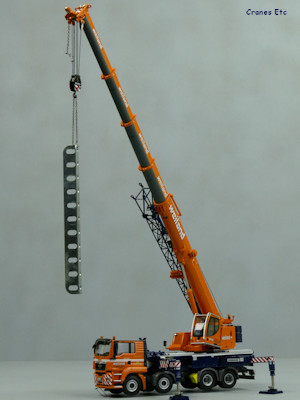 | | Ready to lift. |
|

